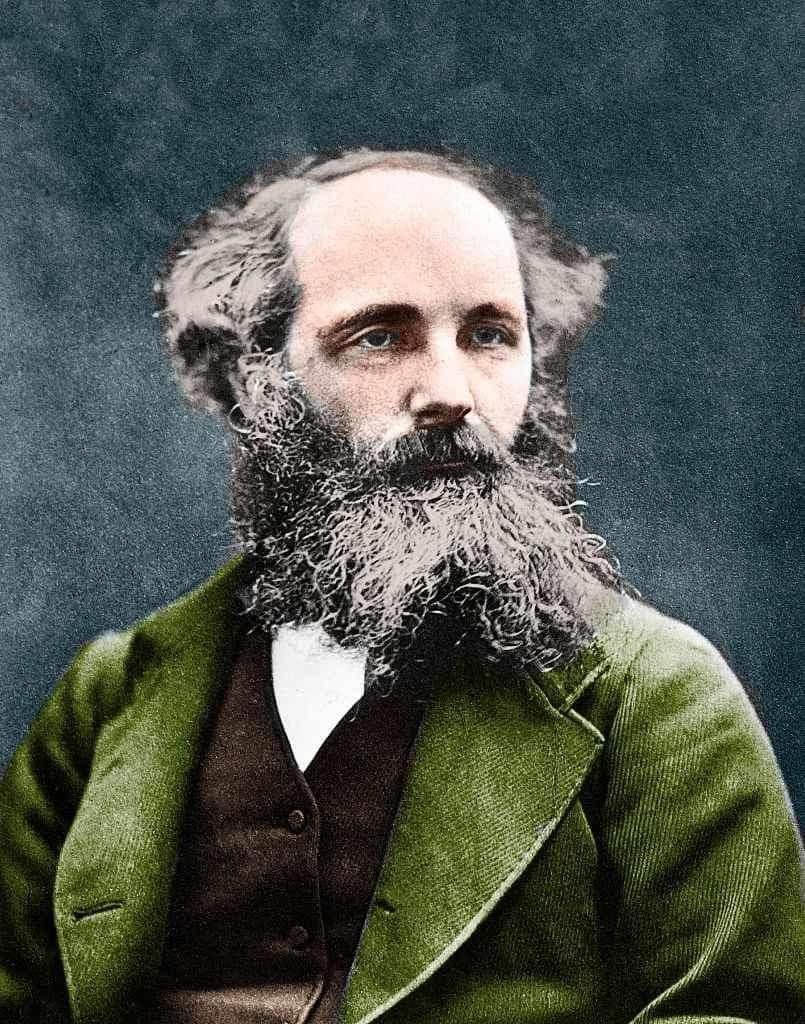#history
#memory
James Clerk Maxwell.
“The numbers may be said to rule the whole world of quantity, and the four rules of arithmetic may be regarded as the complete equipment of the mathematician.”
Everyone admires Albert Einstein:
He invented at least four new fields of physics, spun a brand-new theory of gravity out of the fabric of his own imagination, and taught us the true nature of time and space.
But Einstein himself was a fan of James Clerk Maxwell 1831-1879), the scientist responsible for explaining the forces behind the radio in your car, the magnets on your fridge, the heat of a warm summer day and the charge on a battery.
Maxwell, a 19th-century Scottish scientist and polymath was perhaps the single greatest scientist of his generation, and revolutionised physics in a way nobody was expecting. In fact, it took years for Maxwell’s peers to realise his greatness.
At the time, one of the great focuses of scientific interest was the strange and perplexing properties of electricity and magnetism. While the two forces had been known to humanity for millennia, the more scientists studied these forces, the weirder they seemed.
Ancient people knew that certain animals, like electric eels, could shock you if you touched them and that certain substances, like amber, could attract things if you rubbed them. They knew that lightning could start fires. They had found seemingly magical rocks, called lodestones, that could attract bits of metal. And they had mastered the use of the compass, albeit without understanding how it worked.
In the past a wide variety of experiments had expanded on the weirdness of these forces. Scientists like Benjamin Franklin had discovered that the electricity from lightning could be stored. Luigi Galvani found that zapping living organisms with electricity caused them to move.
Meanwhile, French scientists found that electricity moving down a wire could attract — or repel, depending on the direction of the flow — another wire and that electrified spheres could attract or repel with a strength proportional to the square of their separation.
There seemed to be a strange link between electricity and magnetism. Electrified wires could deflect the motion of a compass. Starting the flow of electricity in one wire could spur the flow of electricity in another, even if the wires weren’t connected. Waving a magnet around could generate electricity.
All of this was absolutely fascinating, but nobody had any idea what was going on.
Then Maxwell came along. He had heard about the electricity and magnetism confusion while he was working on another problem: how colour vision works. (Indeed, he invented the colour photograph.)
In just a few years, Maxwell envisioned the physics and mathematics needed to explain all of the experiments relating to electricity and magnetism.
Today, modern physics is based on the concept of the field, an entity that spans all of space and time and tells other objects how to move. While Maxwell wasn’t the first to envision such a field, he was the first to put it to work and turn it from a convenient mathematical trick into a real physical entity.
Maxwell envisioned the forces of electricity and magnetism to be carried and communicated by electric and magnetic fields. Maxwell said an electric charge would produce an electric field that surrounded it. Any other charges could sense this field, and based on the strength and direction of the field, it would know how to respond to the force of the original charge.
Maxwell realised that electric and magnetic fields are two sides of the same coin: Electricity and magnetism weren’t two separate, distinct forces, but merely two expressions of the same, unified electromagnetic force.
Maxwell’s insights took the form of 20 interconnected equations, which, a few years later, were reduced to four equations of electromagnetism that are still taught to scientists and engineers today. His revolution followed Isaac Newton’s first unification of physics, in which Earth’s gravity was joined with the gravity of the heavens under a single law, and Maxwell’s equations became known as the second great unification in physics.
Modern physics is all about finding single unifying principles to describe vast areas of natural phenomena, and Maxwell took the unification principles to the next level.
Maxwell also realised that changing electric fields could induce magnetic fields, and vice versa. So he immediately began to wonder if such a setup could be self-reinforcing, wherein a changing electric field would create a changing magnetic field, which could then create a changing electric field and so on.
Maxwell realized that this would be a wave — a wave of electromagnetism. He set about calculating the speed of these electromagnetic waves, using the strengths of the forces of electricity and magnetism, and out popped … the speed of light.
By introducing the concept of the field to the analysis of electricity and magnetism, Maxwell discovered that light — in all its forms, from the infrared, to radio waves, to the colors of the rainbow — was really waves of electromagnetic radiation.
With one set of equations, one brilliant leap of intuition and insight, Maxwell united three great realms of physics: electricity, magnetism and optics. No wonder Einstein admired him.
His paper On Physical Lines of Force (1861-1862) introduced his pivotal theory of electromagnetism. Among the tenets of his theory were (1) that electromagnetic waves travel at the speed of light, and (2) that light exists in the same medium as electric and magnetic phenomena.
In 1865, Maxwell resigned from King’s College and proceeded to continue writing. Maxwell became the Cavendish Professor of Physics at Cambridge. On November 5, 1879, Maxwell died—at the age of 48—from abdominal cancer.
Considered one of the greatest scientific minds the world has ever seen—on the order of Einstein and Isaac Newton—Maxwell and his contributions extend beyond the realm of electromagnetic theory to include: an acclaimed study of the dynamics of Saturn’s rings; the somewhat accidental, although still important, capturing of the first color photograph; and his kinetic theory of gases, which led to a law relating to the distribution of molecular velocities. Still, the most crucial findings of his electromagnetic theory—that light is an electromagnetic wave, that electric and magnetic fields travel in the form of waves at the speed of light, that radio waves can travel through space—constitute his most important legacy.
Einstein wrote of Maxwell:
“This change in the conception of reality is the most profound and the most fruitful that physics has experienced since the time of Newton.”

